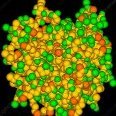Tech solutions to tackle overfishing, labor abuse at sea
-
Recently Browsing 0 members
- No registered users viewing this page.
-
Topics
-
Popular Contributors
-
Latest posts...
-
161
Report Thailand Sees a Surge in COVID-19 Cases: Concerns for Public Health
Careful with the racism now. </sarcasm> -
198
Even MAGA Is Up in Arms Over Trump’s ‘Flying Grift’ From Qatar
Unless you were one of those voters who was working on one of the actual 747s being built as new AF1s to be told they were out of a job, as they don't need the plane now. Laurer Loomer seemed a bit put out by it. Ben Shapiro, I think he's one of them, banged on about it Mark Levin was somewhat perturbed by reports that the President was getting a plane off people he considered evil incarnate. -
34
Joe Biden Diagnosed with Aggressive Cancer
Truley sad to hear anyone is suffering from that terrible condition however, put that terrible scene to the side ...... a sham of a president, and pure pond scum The big question is, who was really calling the shots for the last 2 years ? Sure wasn't "Dr" Jill, maybe Pelosi and crew ? Auto pen that ! -
67
Revenue Department to amend tax on foreign income remittance
Me too, a lot of people have filed tax returns already, in fact anyone who hasn't is now a 'late filer' this year for last years taxes if they were resident and remitted more than the paltry allowances. I left Thailand last year for just over 6 months as I sold something which I one day planned to remit as and when required over the next 10 to 20 years, my plan was always to use the 'next year' remittance method, then they cancelled that but the sale of my assets didn't happen until late last year. I was quite disappointed but as this was quite a bit of money, potentially enough to last for life - I left just to make sure I never have to pay anything on that. -
3
THAILAND LIVE Thailand Live Wednesday 21 May 2025
UPDATE Construction Worker Declared Dead After 19-Metre Fall at Bangkok Rail Site Picture courtesy of Amarin. The incident occurred at a construction site for Bangkok’s Orange Line mass transit project yesterday when a 33-year-old worker fell into a 19-metre-deep shaft and became trapped beneath a landslide of soil and floodwater. Authorities have now confirmed the incident is no longer a rescue. Full story: https://aseannow.com/topic/1361072-construction-worker-trapped-after-falling-into-deep-pit-at-bangkok-subway-site/#findComment-19812625 -
3
THAILAND LIVE Thailand Live Wednesday 21 May 2025
Thai Police Arrest Transwoman After Brawl With Israeli Tourist Picture courtesy of Amarin TV Pattaya police have apprehended a Thai transwoman involved in a violent altercation with an Israeli tourist on Pattaya Beach Road. The transwoman, whose identity remains undisclosed, vanished from the scene shortly after a chaotic brawl erupted in the early morning hours. Full story: https://aseannow.com/topic/1361208-thai-police-arrest-transwoman-after-brawl-with-israeli-tourist/
-
-
Popular in The Pub
-







.thumb.jpeg.d2d19a66404642fd9ff62d6262fd153e.jpeg)


Recommended Posts
Create an account or sign in to comment
You need to be a member in order to leave a comment
Create an account
Sign up for a new account in our community. It's easy!
Register a new accountSign in
Already have an account? Sign in here.
Sign In Now